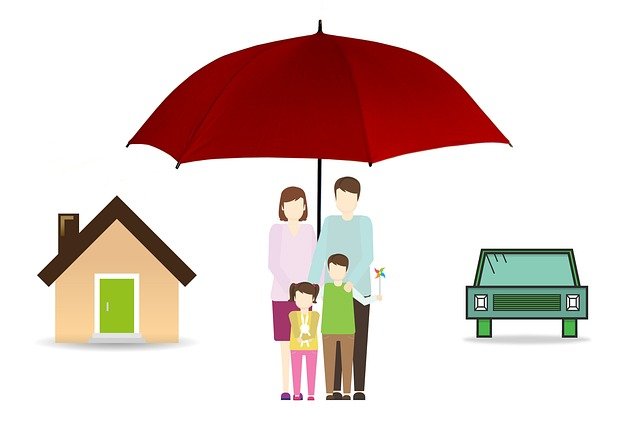Risk Assessment Techniques for Protecting Physical Assets
Effective risk assessment is essential for protecting physical assets such as homes, commercial buildings, equipment, and inventory. This article explains practical techniques to evaluate property condition, estimate valuation, identify exposures, and align coverage and underwriting choices so policyholders and managers can reduce loss and streamline claims handling.

Physical assets face a range of hazards from natural events, theft, human error, and operational failures. A structured risk assessment helps owners and insurers translate those hazards into measurable exposures such as potential loss amounts, frequency of claims, and impacts on liability. The goal is to support appropriate valuation, select suitable coverage, and inform underwriting decisions so premiums and deductible choices reflect actual risk rather than assumptions.
Assessing property condition and valuation
A thorough property inspection is the foundation of any asset risk assessment. Inspectors document structural condition, age of systems (roof, HVAC, electrical), and maintenance history. For homeowners and commercial owners alike, accurate valuation requires current replacement cost estimates, depreciation factors, and consideration of code upgrade expenses if a replacement is needed. Combining on-site observation with recent appraisal data and market comparables yields a defensible valuation that supports underwriting and claims settlement.
Regular condition assessments also identify deferred maintenance that elevates risk — for example, water intrusion from failing seals that can lead to mold and long-term deterioration. Prioritizing repairs based on likelihood and severity of loss can reduce future claims and influence policy terms.
Evaluating liability and policy exclusions
Risk assessment must extend beyond physical damage to consider liability exposures. Liability evaluation reviews potential for third-party injury, product or premises liability, and contractual obligations that could widen insurer payouts. When analyzing policies, pay close attention to exclusions and sub-limits that limit coverage for specific perils or activities.
Clear documentation of operations, visitor traffic patterns, and safety protocols helps underwriters and owners understand exposures. Where exclusions create gaps, owners should consider endorsements or separate liability policies to address those gaps rather than assuming standard coverage will apply.
Measuring loss frequency and severity for claims planning
Effective risk management differentiates between high-frequency, low-severity events and low-frequency, high-severity catastrophes. Historical claims data, local hazard maps, and operational incident logs provide insight into expected claim frequency and potential severity of losses. This influences reserve planning and claims-handling workflows.
Quantitative models such as loss distribution curves and scenario analysis can estimate probable maximum losses and average annual loss, helping insurers and asset managers determine appropriate retention levels and loss prevention investments.
Underwriting considerations for homeowners and commercial policies
Underwriting translates an assessment into policy terms. For homeowners, underwriters look at construction materials, proximity to hazards, and security features. Commercial underwriting adds factors like business interruption exposure, inventory turnover, and tenant profiles. Accurate underwriting depends on transparent documentation of past claims, maintenance programs, and mitigation measures.
Risk controls — such as sprinkler systems, security alarms, and disaster preparedness plans — often result in more favorable underwriting outcomes and can reduce premiums or lower deductibles based on demonstrated risk reduction.
Managing premiums, deductible choices, and replacement strategies
Premiums and deductible structures should align with quantified risk appetite. Higher deductibles reduce premium costs but increase the owner’s exposure to smaller losses. Replacement cost versus actual cash value options affect how losses are settled; replacement coverage generally pays to rebuild without deduction for depreciation, while actual cash value factors depreciation into the payout.
Risk assessments that include replacement valuations and business interruption estimates let decision-makers compare scenarios: for instance, paying a higher premium for replacement-cost coverage versus accepting a deductible and managing repair budgets internally. Underwriting uses this information to price coverage and set policy limits that reflect the assessed exposure.
Claims handling, exclusions, and mitigation strategies
A documented risk assessment streamlines claims by providing pre-loss photos, valuation records, and maintenance logs that support prompt and accurate loss adjustment. Understanding policy exclusions ahead of time reduces surprises during a claim and clarifies responsibilities between owner and insurer.
Mitigation strategies such as preventive maintenance schedules, employee training, and emergency response plans reduce both frequency and severity of claims. Regularly updating the risk profile and sharing findings with insurers can improve policy terms and accelerate claims resolution when losses do occur.
Conclusion A methodical approach to risk assessment ties together property inspection, valuation, liability review, underwriting factors, and claims planning. By quantifying exposures and documenting controls, owners and insurers can make informed choices about coverage, premiums, deductibles, and replacement strategies that reduce loss and improve recovery outcomes.





